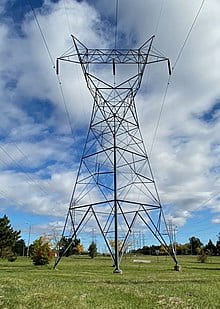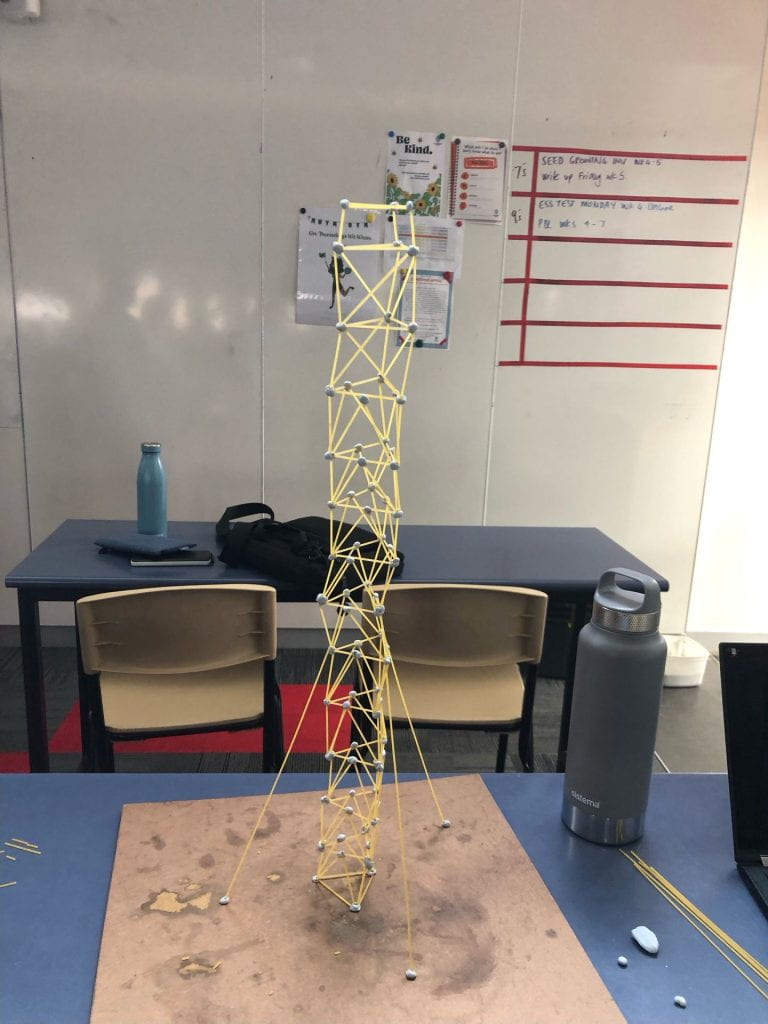This term (4), we completed an engineering challenge as part of our Earth and Space Science unit. Our task was to create a building using spaghetti and blu-tack that was at least 60cm tall and could withstand 10 seconds on a ‘shake table’, which simulated the effects of an earthquake. Our budget was $60 (A stick of spaghetti or a gram of blu-tack cost $1). The goal of the project was to recreate the scenario of an earthquake on a much smaller scale to help us understand the things that can be done to minimise the damage they can do to infrastructure.
Before we formally began the project, we completed a 50 minute Design Sprint, where we were given the chance to make our structure without any research or prior thought. My group created two pyramids, reinforced and stacked on top of each other. Our design was not the most successful, as the top part of the structure was too pointed to hold a platform, and began to collapse when shaken. It was also only around 30cm tall, falling short of the requirement. Afterwards, we reflected on our performance and thought of ways the design could be improved.
The first phase of the project was research. In order to find the best ways to build a structure that would withstand the shake-table, we looked into existing architectural and engineering strategies that allowed buildings to be more resistant to earthquakes. My group’s research was mostly focused on places such as Japan and Taiwan, where there is frequent seismic activity due to the country being located on the edges of tectonic places. We learned several methods used by engineers in those countries to ‘earthquake proof’ their buildings, such as cross-bracing and steel-plated shear walls. These are depicted below:

The second phase of the project was designing our structure. My group and I brainstormed ideas about the best kind of reinforcement, as well as the pros and cons of different existing building designs. We eventually agreed on an electrical tower-inspired design, depicted below (with dimensions):


We calculated the amount of spaghetti we would need (plus some extras in case of breakages) and used the rest of the money for blu-tack. Our final amount was 35 sticks of spaghetti and 25 grams of blu-tack. The total came to $60, the limit of our budget.
The third phase was the building phase. My group constructed our tower over two lessons (though it fell down before we could test it). Below is our final structure:

We made a few changes to the original design by replacing the A-frames with a single cross brace at the top, as we realised the building was too top heavy. Ultimately, however, it did not help much, as our building still collapsed after a few seconds on the shake table. The biggest problems was the overly-leaning orientation of the tower, and the weight of the blu-tack that caused the bottom to cave in on itself.
If we were to attempt this again, the biggest change we would make is to widen the base and use much less blu-tack to avoid the structure collapsing. Next time, it would be prudent to imitate Egyptian rather than Italian engineering.
